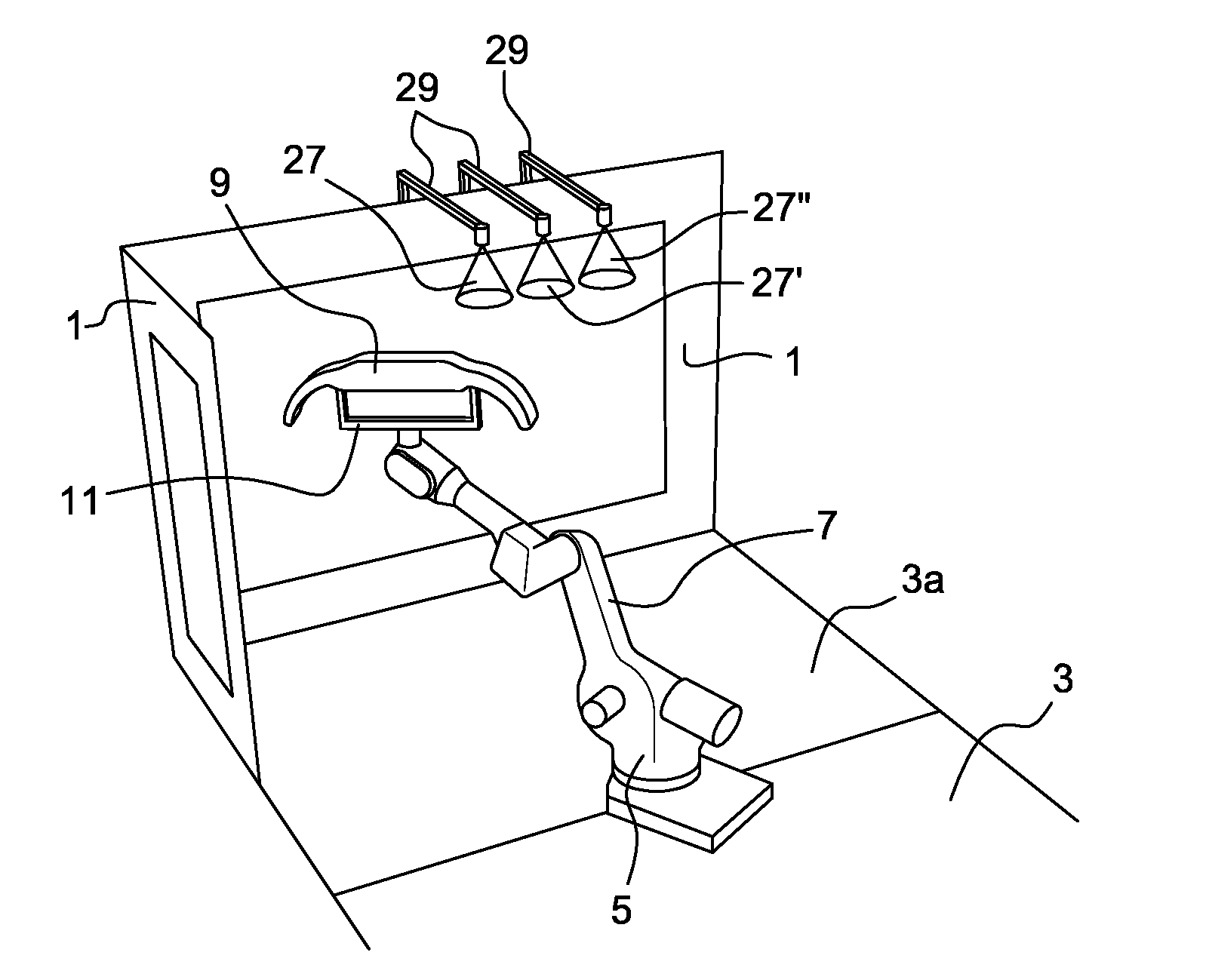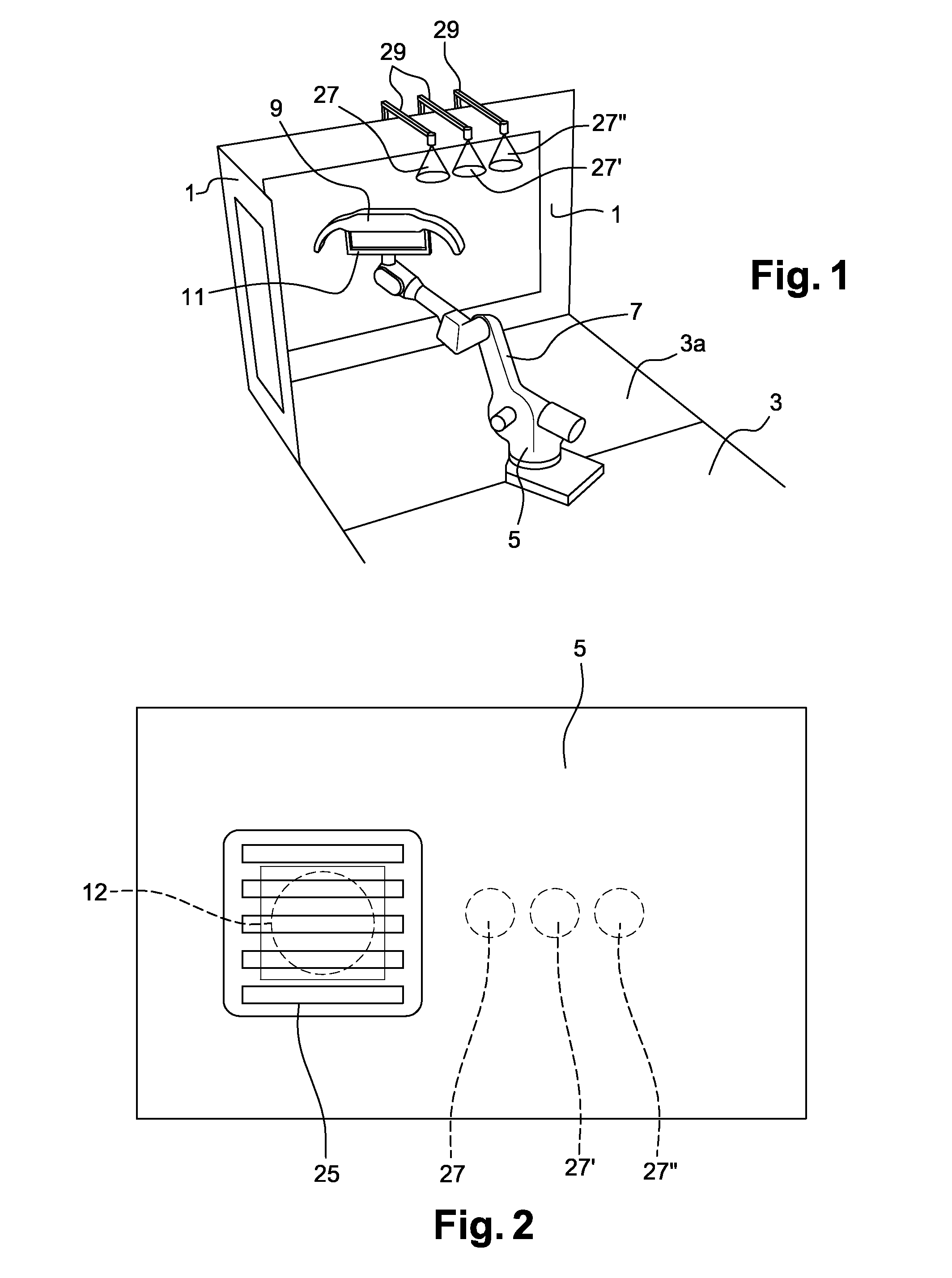Method and system for painting a part of a motor vehicle body
a motor vehicle and body technology, applied in the direction of nuclear engineering, transportation and packaging, railway signalling, etc., can solve the problems of not being able to meet the needs of a large number of customers, not being able to deposit parts in waiting areas, etc., and achieve the effect of improving the quality and reducing the cos
- Summary
- Abstract
- Description
- Claims
- Application Information
AI Technical Summary
Benefits of technology
Problems solved by technology
Method used
Image
Examples
Embodiment Construction
[0044]In order to begin by explaining the advantage of the invention, it is appropriate to recall that it differs from a more conventional solution consisting in placing a freshly-painted part in a waiting zone to allow it a flash-off time between two applications of paint components.
[0045]However, leaving a part to perform its flash-off in a waiting zone implies firstly a significant increase in the tasks to be performed by the robot (e.g. placing a first part in the waiting zone, placing a second part in the waiting zone, taking back the first part, taking back the second part, etc.), and implies secondly investments and surface areas in installations that are reserved for this waiting zone (e.g.: a second booth fitted with stacking means, a ventilation system and a communicating airlock controlled together with the painting booth).
[0046]These observations are summarized in the comparative table below which lists the operations and the movements performed by the robot under two co...
PUM
 Login to View More
Login to View More Abstract
Description
Claims
Application Information
 Login to View More
Login to View More - R&D
- Intellectual Property
- Life Sciences
- Materials
- Tech Scout
- Unparalleled Data Quality
- Higher Quality Content
- 60% Fewer Hallucinations
Browse by: Latest US Patents, China's latest patents, Technical Efficacy Thesaurus, Application Domain, Technology Topic, Popular Technical Reports.
© 2025 PatSnap. All rights reserved.Legal|Privacy policy|Modern Slavery Act Transparency Statement|Sitemap|About US| Contact US: help@patsnap.com


